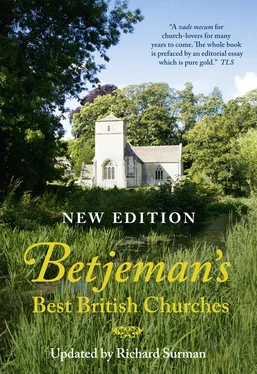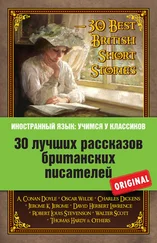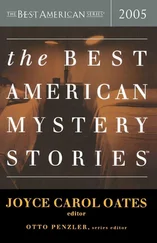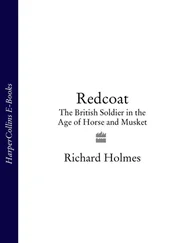1 ...7 8 9 11 12 13 ...22 Outside the church on a sunny Sunday morning the congregation gathers. The poorer sort are lolling against the tombstones, while the richer families, also in their best clothes, move towards the porch where the churchwardens stand with staves ready to conduct them to their private pews. The farmworkers do not wear smocks for church, but knee breeches and a long coat and shoes. Women wear wooden shoes, called pattens, when it is wet, and take them off in the porch. All the men wear hats, and they hang them on pegs on the walls when they enter the church.
How still the morning of the hallowed day!
Mute is the voice of rural labour, hushed
The ploughboy’s whistle, and the milkmaid’s song.
The scythe lies glittering in the dewy wreath
Of tedded grass, mingled with fading flowers,
That yester morn bloomed waving in the breeze.
Sounds the most faint attract the ear, – the hum
Of early bee, the trickling of the dew,
The distant bleating, midway up the hill.
With dove-like wings, Peace o’er yon village broods:
The dizzying mill-wheel rests; the anvil’s din
Hath ceased; all, all around is quietness.
Less fearful on this day, the limping hare
Stops, and looks back, and stops, and looks on man
Her deadliest foe. The toilworn horse, set free,
Unheedful of the pasture, roams at large;
And as his stiff unwieldly bulk rolls on,
His iron-armed hoofs gleam in the morning ray.
So the Scottish poet James Graham begins his poem The Sabbath (1804). All this island over, there was a hush of feudal quiet in the country on a Sunday. We must sink into this quiet to understand and tolerate, with our democratic minds, the graded village hierarchy, graded by birth and occupation, by clothes and by seating in the church. It is an agricultural world as yet little touched by the machines which were starting in the mills of the midlands and the north. The Sabbath as a day of rest and worship touched all classes. Our feeblest poets rose from bathos to sing its praises. I doubt if Felicia Hemens ever wrote better than this, in her last poem (1835), composed less than a week before she died.
How many blessed groups this hour are bending,
Through England’s primrose meadow paths, their way
Towards spire and tower, midst shadowy elms ascending,
Whence the sweet chimes proclaim the hallowed day:
The halls from old heroic ages grey
Pour their fair children forth; and hamlets low,
With whose thick orchard blooms the soft winds play,
Send out their inmates in a happy flow,
Like a freed rural stream.
I may not tread
With them those pathways, – to the feverish bed
Of sickness bound, – yet, O my God, I bless
Thy mercy, that with Sabbath peace hath filled
My chastened heart, and all its throbbings stilled
To one deep calm of lowliest thankfulness.
One is inclined, seeing the pale whites and ochres and greys, relieved here and there with the warm brown red of local bricks, which we associate today with Georgian England, to forget how highly coloured were the clothes of the people. Thomas Hood’s early poem The Two Peacocks at Bedfont (1827) describes with the colours of an aquatint the worshippers entering that then countrified Middlesex church:
So speaking, they pursue the pebbly walk
That leads to the white porch the Sunday throng,
Hand-coupled urchins in restrained talk,
And anxious pedagogue that chasten wrong,
And posied churchwarden with solemn stalk,
And gold-bedizened beadle flames along,
And gentle peasant clad in buff and green,
Like a meek cowslip in the spring serene;
And blushing maiden – modestly array’d
In spotless white – still conscious of the glass;
And she, the lonely widow that hath made
A sable covenant with grief, – alas!
She veils her tears under the deep, deep shade,
While the poor kindly-hearted, as they pass,
Bend to unclouded childhood, and caress
Her boy, – so rosy! – and so fatherless!
Thus as good Christians ought, they all draw near
The fair white temple, to the timely call
Of pleasant bells that tremble in the ear, –
Now the last frock, and scarlet hood and shawl
Fade into dusk, in the dim atmosphere
Of the low porch, and heav’n has won them all . . .
The Lord of the manor and his family have entered their private pew, hidden in a transept and with a separate entrance. Their liveried servants sit on a bench behind them. All round the church is an array of hats hanging on pegs on the walls above the pews. The parson, who has entered the church in his long white surplice and red silk hood of an Oxford Master of Arts, takes his place in the second desk of the three-decker. The parish clerk is below him to say ‘Amen’. He begins Morning Prayer, facing the congregation. He then mounts to the pulpit and preaches a sermon, which is usually read. Extempore preaching was a sign of ‘enthusiasm’. The Devon poet N. T. Carrington well describes a morning service in My Native Village (1830):
Ah, let me enter, once again, the pew
Where the child nodded as the sermon grew;
Scene of soft slumbers! I remember now
The chiding finger, and the frowning brow
Of stern reprovers, when the ardent June
Flung through the glowing aisles the drowsy noon;
Ah admonitions vain! a power was there
Which conquer’d e’en the sage, the brave, the fair, –
A sweet oppressive power – a languor deep,
Resistless shedding round delicious sleep!
Till closed the learned harangue, with solemn look
Arose the chauntcr of the sacred book, –
The parish clerk (death-silenced) far-famed then
And justly, for his long and loud – Amen!
Rich was his tone, and his exulting eye
Glanced to the reedy choir, enthroned on high,
Nor glanced in vain; the simple-hearted throng
Lifted their voices, and dissolved in song;
Till in one tide, deep welling, full and free
Rung through the echoing pile, old England’s psalmody.
The singing is from metrical psalms which are bound with every prayer book. The versions used were generally those awkward quatrains by Tate and Brady. They are easily committed to memory. The minister or clerk reads out the stanzas and then the congregation sings, stanza by stanza, those few who cannot read committing the lines to memory. The custom, still prevailing in some Evangelical churches and many chapels, of the minister’s proclaiming the first verse of the hymn, is doubtless a survival of these days. Two of Tate and Brady’s metrical psalms, ‘Thro’ all the changing scenes of life’ and ‘As pants the hart for cooling streams’, survive, cut down, in modern hymn books. An appendix to the Psalms was also printed, consisting of rhyming doxologies and a few hymns for special occasions such as ‘While Shepherds watched’. From this appendix grew the separate hymn book, of which the most famous and successful was Hymns Ancient and Modern (1861), which consisted first of 273 hymns.
The parson’s sermon is the end of the service unless it is ‘Sacrament Sunday’. For the sermon has come after the Nicene Creed and not at the end of the office of Morning Prayer. It was the custom to have Morning Prayer, Litany and Ante-Communion. The whole service lasted about two hours. As the time of eating was at three o’clock, this was no great inconvenience. But one can understand where the deep-rooted English idea that church worship is boring had its origin. The layman was asked to take part in the monkish offices of Morning and Evening Prayer (an anglicized and potted version of the daily offices of monks and nuns) as well as in the celebration of Communion, always the central act of worship of the Church. The English habit of attending but not receiving Communion was the origin of the Ante-Communion service alone being read, and ‘Sacrament Sundays’ being special and rare occasions; for it was ordered in the Prayer Book that two or three people must be willing to partake of the Sacrament before it could be celebrated. This order was made with the intention of encouraging people to communicate. But the habit of abstaining was too strong, hence the diminution of the service to Ante-Communion.
Читать дальше











